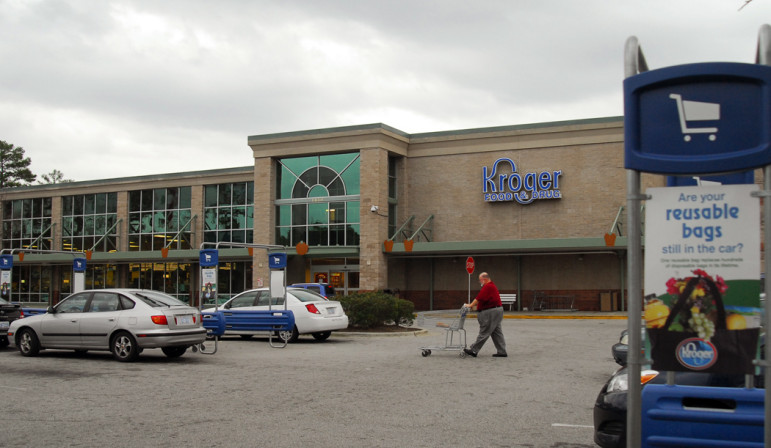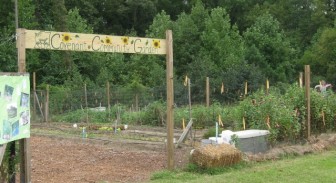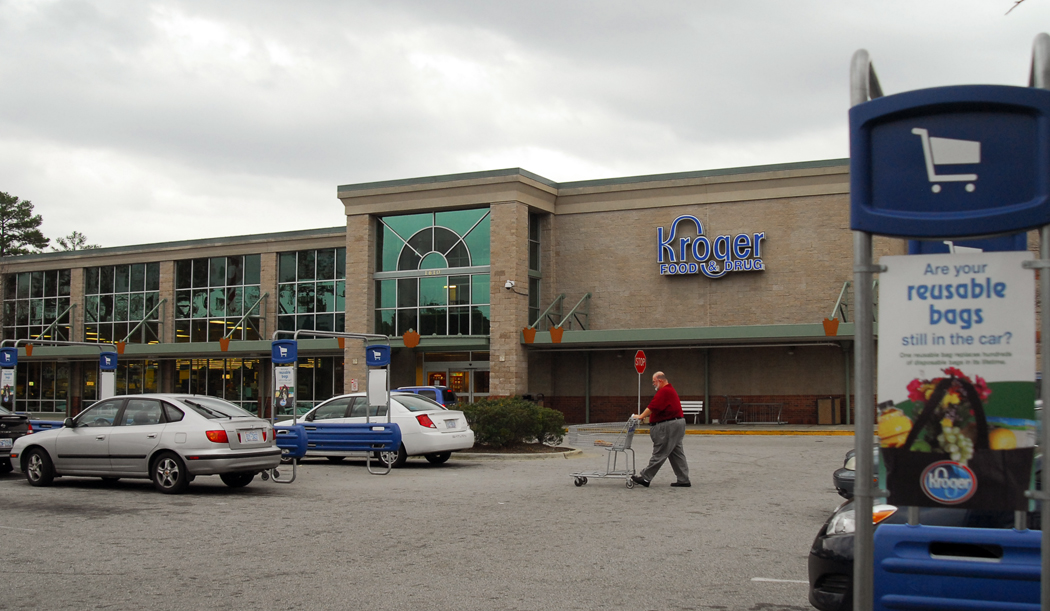When a grocery store closes, it leaves a hole in the local food supply that’s not easy to fill.
The January closing of the Kroger supermarket on Martin Luther King Jr. Boulevard and New Bern Avenue left some Raleigh residents without an easily accessible grocery. City government and grassroots groups are working on improving Southeast Raleigh’s food supply, but members of Raleigh’s Citizen Advisory Committees say they’re not there yet.
“There’s been a lot of grassroots interest and it may yield something in the future,” said Emrys Treasure, co-chair of the East Raleigh CAC. “To this point I haven’t seen any material benefit — some of these things just take time.”

Karen Tam
File: The Kroger on Martin Luther King, Jr. at Raleigh Boulevard. This picture was taken before it closed.
Treasure said the Kroger closing only leaves one less-accessible grocery store in east Raleigh, and many residents in the area don’t have the transportation to reach it.
Southeast Raleigh CAC Co-Chair Tim Sit said the inside-the-beltline part of his district has the same problem with food access.
“Outside the beltline, you’re probably going to have a car,” he said.
The Quest for Food
Most definitions of a food desert — an area where a significant number of residents can’t find healthy food — count lack of transportation as part of the problem, along with low incomes and a lack of nearby groceries.
Kroger representatives said in 2012 that its stores weren’t profitable enough to keep open. Profit margins in the grocery industry hover around 1.3 percent, leaving little wiggle-room if costs spike or sales slump. Carlie’s IGA, a North Carolina grocery chain, opened in the former New Bern Kroger site in 2013.
Carlie’s President Mack McLamb said the chain controls costs enough it can get by on a lower sales volume than Kroger.
Raleigh Planning Department Director Mitchell Silver said the city has talked unsuccessfully with other chains about reopening in the other Kroger location. Until a new tenant moves in, Raleigh is allowing a temporary farmer’s market in the parking lot.
The market, run by the  [/caption]
[/caption]
“We also changed urban agriculture rules to allow for more community gardens throughout the city, particularly in Southeast Raleigh,” Silver said, and to allow for temporary vegetable stands, similar to the way it approves temporary Christmas-tree and fireworks vendors. “We do whatever we can. We recognize it’s a problem.”
However, he adds, “We can set the rules. It’s up to the nonprofit and private sector to take advantage.”
Urban Agriculture
Maurice Smalls, an Ohio urban-agriculture activist, said he’s been working on that for the past two years. Since the Interfaith Food Shuttle brought him to the Triangle, he said, southeast Raleigh has added five acres of community gardens.
In the fall, the gardens offered onions, Swiss chard, kale, more than a dozen herbs and various tomato and pepper varieties. For winter, there are collards, cabbage, beets and lettuce. It’s up to the individual gardeners and urban farmers whether they eat their share of the produce themselves or sell it. Raleigh now has seven to 10 acres of urban agriculture, Smalls said, “which is a mere pittance compared to other urban areas.”
Erin White of the Community Food Lab, a private organization studying food systems, said community gardens and temporary food vendors have reduced food desert conditions in other cities, such as Seattle. He says neighboring Durham offers other solutions, such as the LoMo Market, a food truck that sets up as a farmer’s market in different locations on rotation, and Cookery, a commercial kitchen that rents space to other food entrepreneurs.
However, White says, Wake County doesn’t allow for Cookery-type arrangements, where multiple businesses share one kitchen permit.
Sit says he’s not sure how much impact urban agriculture and farmers’ markets can have:
“People say they want it, but it depends whether they have the time to get there when the farmer’s market is available.”
That may not be possible, he said, depending on residents’ work schedules and available transportation.
State-Level Efforts
The problem isn’t unique to Raleigh. The American Heart Association says the state has 410,000 residents living in 171 food deserts scattered throughout North Carolina in both urban and rural areas. In 2013, Wake County State Rep. Yvonne Holley proposed a bill offering tax credits to businesses that create jobs in food desert areas, provided at least 10 percent of their gross receipts comes from selling nutrient-dense foods.
The bill also offers credits to businesses that invest in business property in food deserts. Holley says mom-and-pop stores that expand their food offerings — investing in a refrigerated section, for instance — could qualify.
Holley told the Record that after the bill generated interest from the state Agriculture Department, the American Heart Association and retail groups, the Legislature assigned it to a study committee. She said she expects a committee recommendation on the bill in the 2014 session.
